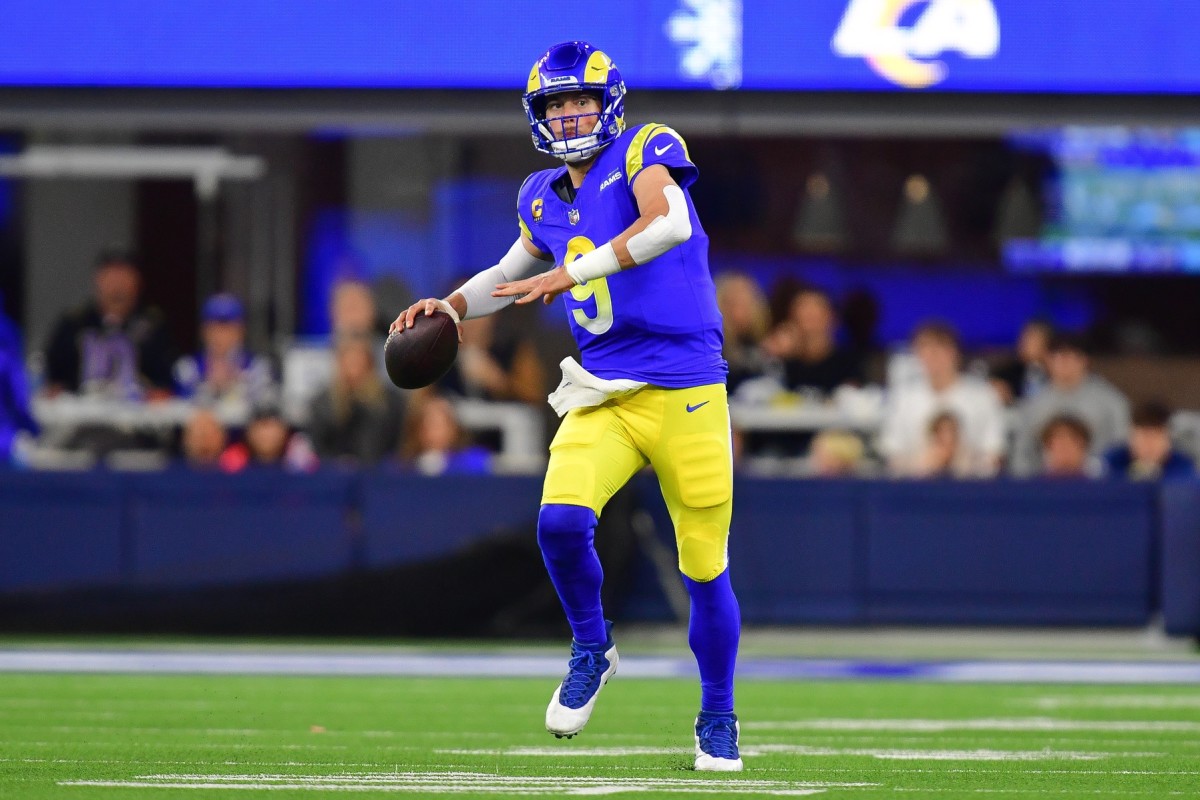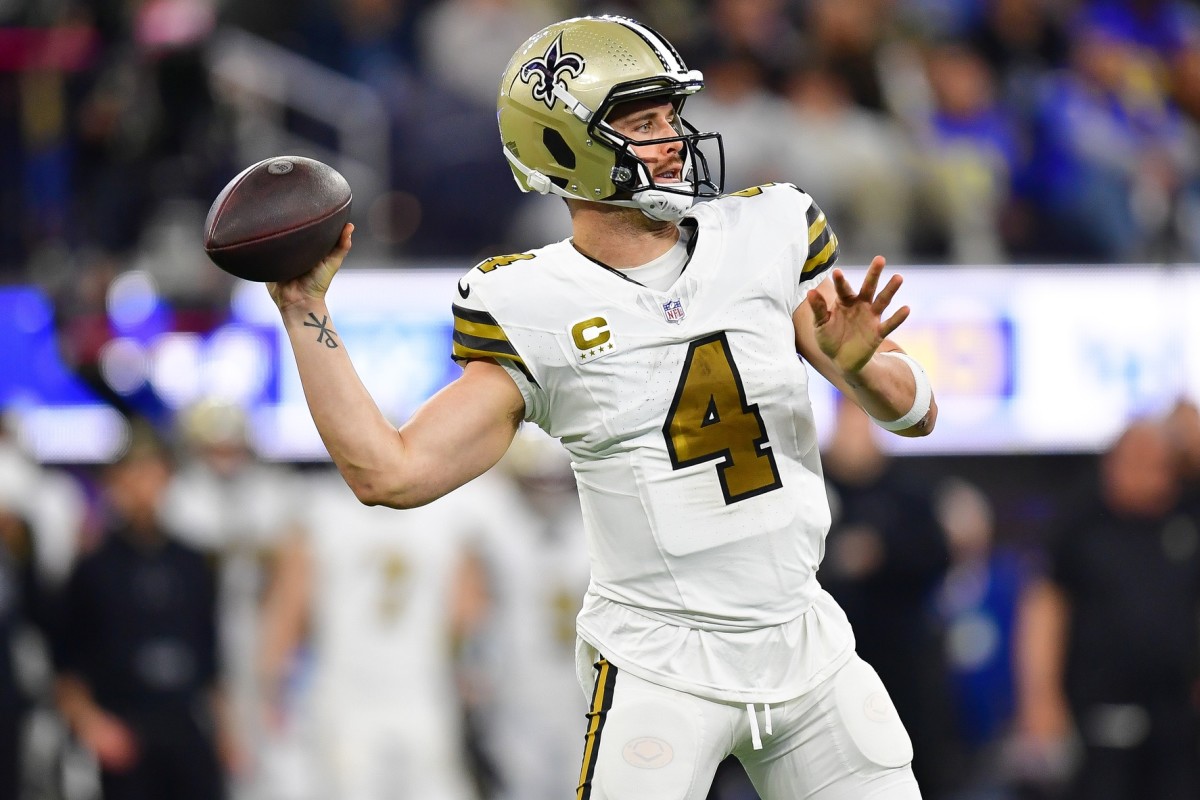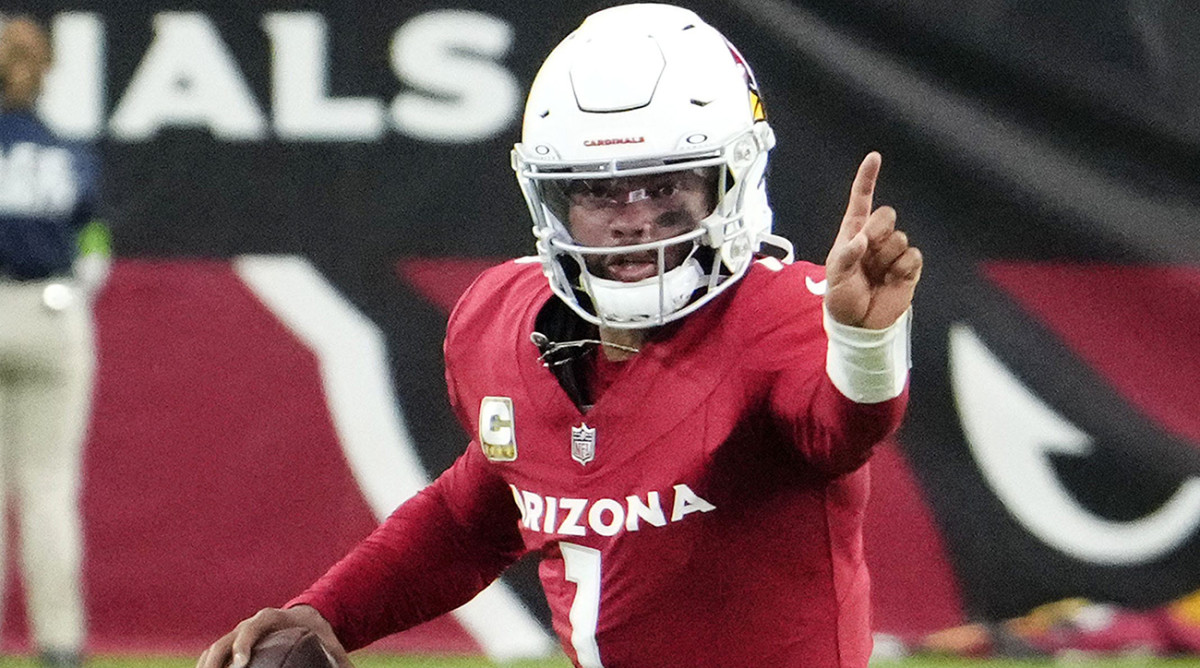Rams Revival: How Les Snead, Sean McVay and Matthew Stafford Rebuilt L.A. into Playoff Contender
This was supposed to be a reset year for the Rams. They had no first-round pick (gone to Detroit as part of the Matthew Stafford trade). They were carrying $75 million in dead money (accounting for money pushed forward to extend the team’s title window). They moved on without Jalen Ramsey, Leonard Floyd, Greg Gaines, Nick Scott and a bunch of others. They came into the season with a banged-up Cooper Kupp, rookies contributing everywhere, and fans eyeing Caleb Williams.
Yet, here we are. The Rams (8–7) enter the weekend as the NFC’s sixth seed, and set up after a year of restraint to be the aggressor again. They have a first-round pick for the first time since selecting Jared Goff with the No. 1 pick in 2016, and could have as much as $50 million in cap space.
And, yes, Stafford and Sean McVay deserve a ton of credit. But so too does GM Les Snead, and the team’s personnel department, and the team’s roster—with a third of the team’s cap space dedicated to players who are no longer around, and nearly another third dedicated to three players (Stafford, Kupp and Aaron Donadl)—is a testament to the work that’s been done within an organization that’s constantly thought outside the box.

So how do you work around all that? By finding players under every rock.
By bolstering the offensive line with Steve Avila in the second round. By landing the guys who rank first (Byron Young) and second (Kobie Turner) in sacks among rookies in the third round. By finding a receiver who’s rewriting the rookie record book in Puka Nacua in the fifth round. By having a fifth-round back from a year ago, Kyren Williams, leading the league in rushing yards per game entering Week 15.
And on the veteran market, it’s by hitting on minimum-salary guys such as corner Ahkello Witherspoon and receiver Demarcus Robinson, and finding Kevin Dotson at the trade deadline in October.
Put it all together, and, yes, McVay and his staff have done a great job making it work, but the personnel department, led by Snead, has found a way to go through the roster reset—one the Rams felt was necessary to avoid having to go through a multi-year cap reckoning—while putting a competitive group on the field for training camp, and then through the season.
For his part, Snead’s done this by being relentless in finding ways to improve the team’s processes, from incorporating and managing data and analytics to self-scouting mistakes to developing formulas beyond the basic metrics. The past couple of years, for example, they’ve tried to eliminate speed biases, and find new ways to measure play speed, which helped them unearth Williams last year and Nacua (who Snead called the Deebo Samuel of the Mountain West in the runup to the draft) this year.
Thinking differently also led them to Turner, an undersized defensive tackle whose playmaking ability at Richmond translated immediately to Wake Forest and the power-five level, and leading the Rams to think he could excel at the NFL level.
Now, in all likelihood, this is all going to end for the Rams in the wild-card round, with the likelihood they have to line up with the Lions or Cowboys or Eagles. Maybe they can pull an upset. Maybe not. What’s clear, either way, is that an organization that won it all just two years ago, and pulled the Band-Aid off a year later, is back on the way up again. That’s why McVay, Stafford and Snead all deserve a lot of credit.
(And it was something that was again clear on Thursday night in the way that Nacua, Robinson and Williams, et al, played.)

• The Saints, meanwhile, will be a bit stuck coming out of this year at quarterback.
Derek Carr’s due $30 million fully guaranteed next year. And if he remains on the roster, $10 million of his 2025 money will vest—which would create a cost for walking away after the 2024 season.
Now, Carr hasn’t been bad this year. In fact, in a lot of ways, he’s been what New Orleans has needed, giving them some semblance of stability at the position, which they’ve lacked since Drew Brees retired three years ago. So the question isn’t whether he can play. It’s whether he’s worth the contract, with there being a de facto $30 million exit fee after this year, and a $10 million exit fee after next year.
Meanwhile, the Buccaneers are now leading the NFC South, having replaced Tom Brady with Baker Mayfield, who did a one-year deal in March with a base value of $4 million (plus $4.5 million in available incentives), and you could argue has given Tampa Bay a higher level of play than New Orleans has gotten from Carr (Mayfield has thrown for more yards per game, more touchdowns, a higher passer rating and fewer interceptions per game than Carr).
Now, I’d guess Carr is indeed back in New Orleans next year as a continued to bridge to a longer-term answer. But, again, a huge part of that is simply because of the contract.
• The early signing period for college football recruiting closes today, and so I figured this would be a good time to put all the rankings and hype associated with it in context from an NFL perspective by asking a simple question: How often does all the hoopla around individual guys get justified with their entry into pro football?
I looked at last year’s first round, which had 31 picks (the Dolphins forfeited theirs over the Tom Brady–Sean Payton tampering situation). It’s also important to establish what the rankings mean. The 247 composite pools all the major services to come up with a consensus, and mirrors the draft, with 30 or 35 five-star players (first-round), maybe 300 or 350 four-stars (drafted) and however many three-stars (undrafted). Which means the pool of three stars is bigger than the pool of four stars, which is bigger than the pool of five stars.
So among the 31 first-rounders, you had 11 guys who were five-star prospects coming out of high school, 10 four-star prospects, eight three-star prospects, and two guys who were unranked (Seahawks corner Devon Witherspoon and Bills tight end Dalton Kincaid). And six of the 31 ranked top 10 in their classes, 10 ranked in the top 25, 11 were in the top 50, 13 were in the top 100, and 17 were in the top 200.
My conclusion: The recruiting services are actually relatively accurate, given that they’re looking at 17- and 18-year-old kids, but there’s still plenty of room for development for guys such as Witherspoon or Kincaid, or guys such as Lukas Van Ness, Zay Flowers or Felix Anukike-Uzomah, who all ranked outside the top 1,000 in their classes.
• Jonathan Taylor’s going to give it a go Sunday with his surgically repaired right thumb. The Colts are in a critical spot—they’re on the edge of the AFC playoff picture and will be in Atlanta. And I couldn’t help but think that Taylor pushing it this week is part of the benefit of having the guy signed long-term and locked in with first-year coach Shane Steichen.
Hard to imagine he’d be as adamant about playing if he had his next contract to worry about.
• Good call by the Vikings for making the switch from the slit-film turf that’s been so problematic from an injury perspective over the past couple of years.
The slit-film turf is associated with the highest rate of lower extremity noncontact injuries among the types of artificial turfs used in NFL stadiums based on data compiled by the NFL and NFL Players Association’s joint surfaces committee. In its place, the Vikings will install a monofilament version called Act Global Xtreme Turf DX.
It’s not grass, but that’s an indoor stadium, so it’s good that the team and city are making the $1.3 million investment to right a wrong.
The Vikings also will have Act Global Xtreme Turf DX installed at their practice facility.
• It’s at least interesting to consider Mitchell Trubisky’s downward trajectory over the past couple of years when looking at Matt Nagy’s time in Chicago. Nagy’s since won a Super Bowl with Patrick Mahomes in Kansas City, and helped the Chiefs work through the post-Tyreek Hill era on offense, as he moved back into the coordinator role this year.
• This says it all about the 2023 season—there are three games vital to the back end of the AFC playoff picture that’ll be quarterbacked by six backups. The Bengals and Jake Browning take on the Steelers and Mason Rudoph (replacing Trubisky) on Saturday, while the Browns and Joe Flacco will likely get Case Keenum leading Houston on Sunday, and the Colts and Gardner Minshew II will face the Falcons and Taylor Heinicke.

• Kyler Murray has a real chance over the next three weeks to firm up his spot with Arizona next year. If the Cardinals beat the Bears on Sunday, they’d be a lot less likely to get ahead of Chicago (with Carolina’s pick) or New England in the draft order, which would take them out of the Caleb Williams-Drake Maye range. In a roundabout way, it could also land Marvin Harrison Jr. for Murray, too.
• Does Washington owner Josh Harris get antsy—if the Commanders lose a sixth consecutive game this weekend—with three teams (Chargers, Raiders, Panthers) already ready out there on the coaching market and make a move? It will be interesting.
• The Bills are one Dolphins loss away from that Week 18 game being for the AFC East title, as long as they take care of the Chargers and Patriots the next couple of weeks. And Miami has Dallas and Baltimore before hosting the Bills on Jan. 7.
